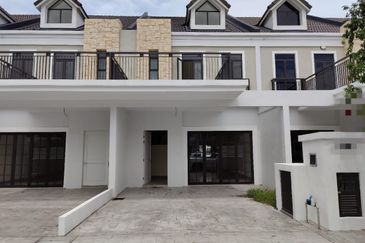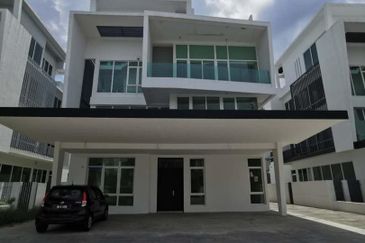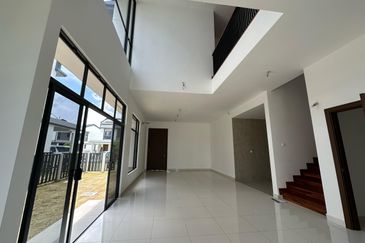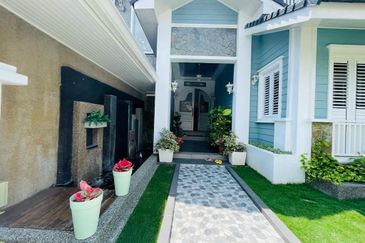
- Watch out for these conditions: frequent breakdowns, mantraps, jerky movements, misalignment of door landing to car, lift car doors not operating smoothly, unusual sounds, water dripping into lift car, damp musty smell and poor ventilation in lift car.
- Building owners (JMB or management corporation (MC)) must understand their duties and responsibilities in maintaining and operating lifts safely as part of the overall management and maintenance of their properties. Ignorance is no excuse.
A lift plummeted from Level 8 to the Ground Floor in a residential apartment in Lengkok Thamby Abdullah, Brickfields, Kuala Lumpur on the evening of Oct 14. As a result, two of the six passengers suffered broken legs. The horrific incident was not the first in the country, and it again begs the question of why, what, who and how.
To answer these questions, EdgeProp.my has reached out to Architect Centre Sdn Bhd accredited building inspector, Anthony Lee Tee, who is also currently serving as a Malaysian Institute of Architects Council member and is chairing the Professional Practice Committee and Disciplinary Committee. Also contributing to the answers is Architect Centre Sdn Bhd (independent property inspection, advisory and forensics) accredited lift & escalator specialist, Raghib Azmi.
Tragic but wholly preventable
The incident, which caused serious injuries, was tragic but wholly preventable. We pray the traumatised victims will recover soon and the cause of the accident can be identified and rectified.
Understandably, with lifts being very much a part of our everyday lives, there has been a lot of chatter over the safety of lifts. Whilst investigations are on-going, we await the authorities’ findings and avoid making speculations.
Nevertheless, the incident is a grim reminder of a similar mishap in Aug 2019, when a lift in a PPR Flats in Kampung Kerinchi, KL, plummeted from Level 5 to the Ground Floor, injuring eight passengers.
Unless buildings are accorded proper management and maintenance, serious accidents of this nature will continue to happen.
Are there laws and regulations governing lift safety?
Lifts are regulated by the Lift Regulation 1970 under Act 139 Factories and Machinery Act 1967 administered and enforced by the Department of Occupational Safety and Health (DOSH) under the purview of the Ministry of Human Resources.
These regulations govern the design, specifications, execution, testing & commissioning (T&C), inspections and maintenance of lifts, escalators, travelators and gondolas. Even though DOSH has issued directives for improvement from time to time, such as safety installation of lift-car- door-locking device for existing lifts, these regulations are generally antiquated.
In March, the government gazetted a comprehensive new Act A1648 Occupational Safety and Health Amendment Act-2022, which is now awaiting ministerial notification. Until such time, Act 139 is in force.

Each new lift installation in a building needs to have a “birth” Certificate of Fitness (CF) issued by DOSH after having satisfactorily fulfilled the requisite tests. Thereafter, all lifts must be maintained by a “Competent Firm” registered with DOSH. This CF must be renewed annually by DOSH after passing satisfactory re-inspection every 15 months. For this, building owners are required to enter into a maintenance agreement with the Competent Firm, in most cases the original equipment manufacturer (OEM).
There is also a list of non-OEM Competent Firms registered with DOSH, listed on its website, which are equally capable of maintaining the equipment. The Competent Firm is legally obligated to conduct monthly maintenance on the equipment and ensure the equipment is checked by a “Competent Person” once every three months.
What can be done to prevent another accident?
For stratified developments, these regulated steps are initially undertaken by the developer and project team, and remain largely unseen by the joint management body (JMB). Only when the lifts encounter frequent and persistent breakdown problems do residents or building owners begin to act, often much too late.
Building owners (JMB or management corporation (MC)) must understand their duties and responsibilities in maintaining and operating lifts safely as part of the overall management and maintenance of their properties. Ignorance is no excuse.
Whose responsibility is it?
For lifts to be operated safely, like everything else in a building that require periodic and preventive maintenance, these three parties must carry out their respective roles and responsibilities:
A. Building owners (and as owners of the lifts) must engage a Competent Firm to maintain the lifts, including carrying out all repairs and replacements. They must proactively ensure the lifts are regularly inspected by DOSH timeously, and operate the lifts with valid CF after satisfactory DOSH inspection.
They should also implement a diligent procurement process to pre-qualify (or conversely, blacklist) OEM-Competent Firms based on their track records, referrals and sound knowledge of the lift equipment in their buildings.
B. Competent Firms should act professionally as required under Act 139 to ensure the lift equipment is maintained including timeous service, repairs and scheduled replacements of parts.

Lifts must be maintained and operated in tip-top condition where cost-cutting, or technical compromises cannot be allowed at the expense of safety and lives.
C. The authorities (DOSH) should carry out their inspections timeously, meticulously and comprehensively. Where necessary, lifts should be closed until satisfactory repairs of faulty equipment or dangerous operating conditions have been undertaken. As a government agency, the department is responsible for the administration and enforcement of the Act related to occupational safety and health of the lifts in the country. Defaulters should be taken to task without fear or favour.
Based on feedback from the industry stakeholders, it is not uncommon for DOSH inspections to be delayed beyond the stipulated 15 months. This situation was made more acute over the Covid-19 lockdown, where lifts were operating without valid CF renewals.
Why are lifts important in a fire?
In the event of a fire, lifts are programmed to “home” (or park) at a designated floor. Where evacuation becomes necessary, occupants must use the fire escape stairs, not the lifts. Under such conditions, the designated Fire Lift can be manually engaged by the fire and rescue department (bomba) to enable fire personnel to access and extinguish a fire. Hence, owners need to be aware the importance to have a functional bomba lift as it forms part of the fire protection system.
What other things can go wrong and why?
Invariably, JMB, MC and building owners need money to maintain lifts. Money is needed to engage a competent Competent Firm (not the cheapest) and subsequently more money for life-cycle replacements of lift equipment. Simply put, financial sustainability becomes crucial through collection of service charges and sinking fund. It becomes financially challenging for JMB and MC to carry out periodic and preventive maintenance if collections are inadequate. Prioritising between the must-fixes is often a race to the bottom in getting the cheapest but hoping for the best, but if you pay peanuts, you get monkeys!

These issues became more acute during and after Covid-19. Lockdowns meant lifts were not easily maintained and inspected. Lifts that were already poorly maintained broke down for longer durations and more frequently, while buildings that were prepared for crises fared better.
What are the tell-tale signs of danger?
Watch out for these conditions: frequent breakdowns, mantraps, jerky movements, misalignment of door landing to car, lift car doors not operating smoothly, unusual sounds, water dripping into lift car, damp musty smell and poor ventilation in lift car.
It is not uncommon to observe rainwater leakage into lift motor rooms and/or flooded lift pits. These conditions are not easy to rectify, and if unattended, will lead to corrosion and expensive repairs and replacements.
If we are unhappy with the service from our current Competent Firm, what should we do?
Building owners can better manage the performance of a Competent Firm by clearly stating their expectations through key performance indicators (KPI) that may be written into the maintenance agreement. They do not have to accept the standard agreement terms given by the Competent Firm which usually favours the latter. Incorporate compliance to Malaysian Standard MS 2698:2018 Maintenance for Lifts and Escalators, which are rules for maintenance Instructions as a requirement into the maintenance agreement.
Alternatively, engage an independent lift safety inspection and advisory to review your lift service contract, and to prepare an independent report on the condition of the lifts and equipment in your property.
Prevention (and knowledge) is better than cure; it is better to be safe than sorry.
TOP PICKS BY EDGEPROP

The Borough @ Eco Botanic 2
Iskandar Puteri, Johor

Bandar Sultan Suleiman Industrial Area
Port Klang, Selangor

Residency Aurora @ Selangor Cyber Valley
Cyberjaya, Selangor

Lavida @ Lake Vicinity Cyberjaya
Cyberjaya, Selangor

Monet Springtime @ Sunsuria City
Dengkil, Selangor

Lucent Residence @ twentyfive.7
Kota Kemuning, Selangor



















